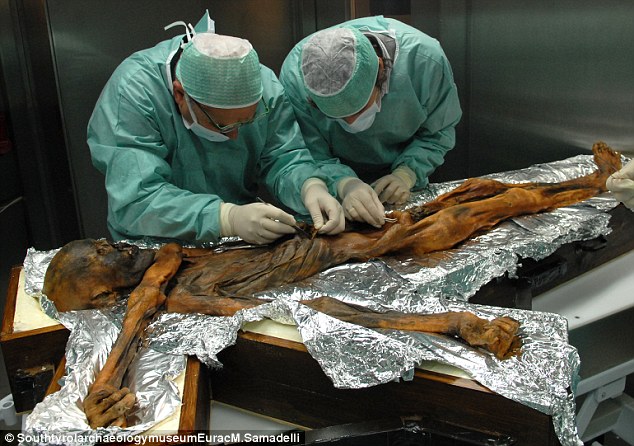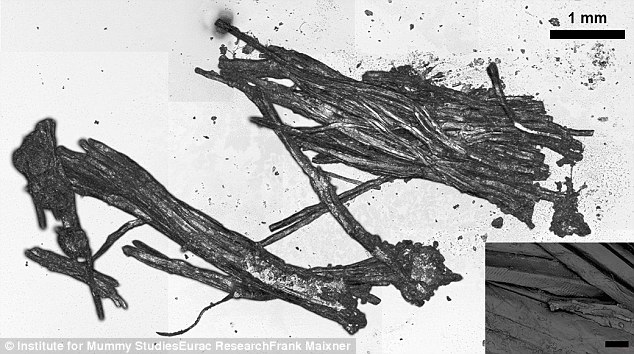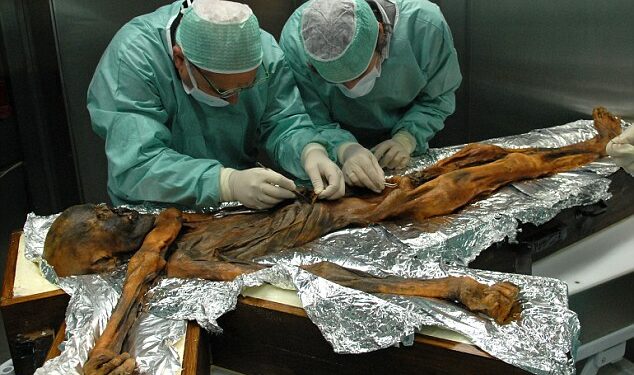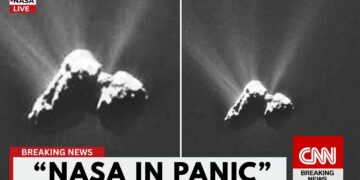By studying the stomach contents of the Iceman mummy, researchers established what constituted a meal in the Copper Age.
‘tzi’ the Iceman gorged on the fatty meat of wild goat and red dear hours before his death – and it tasted ‘terrible.’
The mummified body of the Copper Age hunter was discovered in the Alps in 1991, where he died 5,300 years ago.

Researchers discovered that tzi’s high-fat diet was “ideally adapted to the needs of existence in the high-Alpine environment.”
Tzi’s stomach contents study gives a unique peek into our ancestor’s historical food habits.
While high-fat diets are a popular choice for many people in the present period, the scientists describe their discovery as “extraordinary.”

‘I think it’s vital to understand our ancestors’ diets and compare our findings to our current eating patterns,’ he said.
‘Like this, we can comprehend considerable dietary alterations in an evolutionary relatively short duration.
‘The Iceman’s diet was far less processed than our present meals. Consider the entire grains and muscle fibers that we discovered.
‘We believe that this unprocessed meal altered the gut microbiota makeup and, in the long term, the overall physiology of the Iceman,’ says the study’s lead author.
Tzi’s stomach contents have previously been impossible to analyze due to their peculiar location.

‘The high-Alpine location (10,500 feet/3,200 meters) where the Iceman resided and was discovered some 5,300 years after his death provides a real challenge for human physiology,’ Dr. Maxiner told MailOnline.
‘It needs an adequate supply of nutrients to avoid an abrupt decline in energy.’
‘t’s the last supper was a balanced blend of carbs, proteins, and fats — well adapted to the needs of high-Alpine existence.’
The findings expand on a previous study from 2017, which discovered that the contents of Tzi’s stomach were meat-heavy.
‘We’ve investigated the meat’s nanostructure, and it appears like he ate fatty, dried meat, most likely bacon,’ said Dr. Albert Zink, who was part of the prior study.
Tzi wandered around South Tyrol, an area in northern Italy where his bones were discovered in September 1991.
He was discovered mummified in ice by two German hikers in the Oetztal Alps, 3,210 meters (10,500 ft) above sea level.
Scientists have employed cutting-edge, non-invasive diagnostics and genetic sequencing to delve into his enigmatic history.
Tzi died at the age of 45, was around 1.60 meters (five foot, three inches) tall, and weighed 50 kg, according to their studies (110 pounds).

Dr. Zink’s team discovered that they had ulcer-inducing bacteria and may have suffered from stomach discomfort as part of their recent findings.
According to Dr. Zink in the prestigious US magazine Science, despite his parasites, torn ligaments, and terrible teeth, he was in ‘quite a decent form.
Scientists were also able to effectively duplicate the ‘best approximation’ of the ancient man’s deep Stone Age voice using CT images.
The researchers could digitally replicate Tzi’s vowel sounds after successfully recreating the mummy’s vocal cords, throat, and lips.
‘We can’t say we’ve recreated Tzi’s original voice since we’re missing some key information from the mummy,’ Rolando Füstös, principal researcher and laryngologist at Bolzano’s San Maurizio Hospital, told Discovery News’ Rossella Lorenzi.























